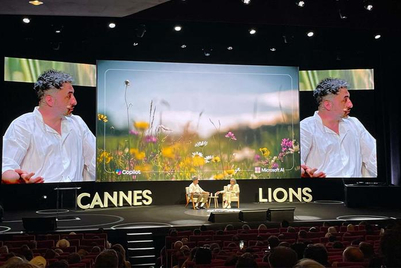
| PARTNER CONTENT |
Text: Joelle Siew, senior manager, advertiser solutions, PubMatic Singapore
It is estimated that programmatic will grow from a market value of US$2.7 billion in 2017 to US$6.8 in 2020 in APAC as more advertisers in South East Asia (SEA) seek to benefit from the advantages of targeted data driven advertising.
As programmatic becomes more mature in SEA, we have noticed several compelling trends emerge.
Rising importance of mobile
The availability of inexpensive smartphone technology coupled with fast internet speeds in SEA has resulted in an upwards mobile consumption trend that is unmatched by other markets.
According to a study completed by Google & Temasek for Tech in Asia in 2017, more than 90% of users in SEA are connecting to the internet via mobile, making the region top of the charts when it comes to mobile first.
For sure, Indonesia, Malaysia, Philippines and Thailand are among the top 10 most globally engaged countries on mobile. As seen in an eMarketer report from February 2019, mobile ad spend accounts for 76.6% of digital advertising in with APAC.

Despite the huge growth in mobile penetration, most SEA advertisers do not have a mobile specific buying strategy, and mobile ad advertising has not increased exponentially. To start capitalising on this opportunity we believe advertisers need to implement the following actions:
- Work with supply partners to eliminate fraud and instil better measurement
Advertisers remain fearful of investing their programmatic budgets on mobile due to the perceived quality of mobile app inventory and rampant mobile ad fraud. To alleviate these concerns, we are in the forefront of all IAB initiatives including Seller.JSON, app-ads.txt, having only direct or single hop inventory, and establishing a fraud free guarantee. Additionally, the launch of Open Measurement SDK by IAB will create a standard measurement ground for all verification partners to better fight fraud. These initiatives will establish a path to quality inventory where advertisers can feel more confident in mobile advertising.
- Create mobile-first formats
Advertisers are encouraged to create mobile-first formats like interscrollers and vertical videos and work with third party rich media vendors to create engaging interactive ads, such as gamified ads. These ads typically generate an engagement rate two to three times higher than a standard display unit. Advertisers should also look to create native ad formats for popular apps like Grab & Meitu to fit the app’s look and feel, making them less intrusive. Native advertising on mobile is a great opportunity for advertisers on premium apps as these formats have not been highly demanded by advertisers yet.
Continued demand for video supply
Given the accessibility of mobile devices and the low cost of 4G usage, it is no surprise that there is a shift from TV to mobile as users in SEA are consuming more video on their device, especially on OTT apps such as Netflix, Viu, etc. According to eMarketer, video on-demand revenues. in APAC are forecasted to increase from US$21 billion in 2018 to US$48 billion in 2024. Brands like Unilever and Proctor & Gamble have shifted their focus to buying on video, utilising storytelling techniques to encapsulate their brand message and capture more market share.
Publishers in Indonesia particularly show this increase for video demand as they have been asked by clients to increase their supply for instream formats, indicating interest from advertisers to diversify their spend beyond focusing on Youtube.
We have embarked on a strategy to onboard more video supply, especially OTT publishers such as Telkomsel Maxstream in Indonesia, and LineTV in Thailand. We’ve also partnered with several rich media providers, like Bonzai & SeenThis, to empower a rich media video marketplace and support advertisers in engaging with their audiences.
Advertisers should create mobile-first video formats such as short-form vertical videos, and work with a trusted supply side partner and publishers to curate their own video marketplace for premium video supply.
Growth of programmatic guaranteed & private marketplaces
As programmatic matures in SEA we have seen a steady growth in programmatic guaranteed and private marketplaces, especially in the Indonesian and Thai markets. A BCG study performed in 2018 predicts that programmatic guaranteed in digital display and video ad activity will increase from 6% in 2017 to 11% in 2020 across APAC.
With the need to ensure brand safety and secure premium inventory where supply is scarce among publishers, programmatic guaranteed has become increasingly popular in these markets as an automated way to replace and execute direct IO buying. Publishers also prefer such models as it guarantees their revenue and allows them to control the execution of their inventory. Models for programmatic guaranteed executions include CPM (Cost per Mile) and CPD (Cost per Day). Some key benefits of using programmatic guaranteed & private marketplaces in SEA include:
- Access to premium inventory such as instream supply that is scarce especially among publishers.
- The ability to ensure quality supply and establish high control and personalization over their buy.
- Buying efficiencies for automation and cost.
Advertisers who wants more control over their buys can consider building curated marketplaces around their verticals of interest or engage with a supply side platform or publisher to push out programmatic guaranteed deals that are catered around your requirements and audiences.
By tailoring their programmatic approach for SEA, advertisers are well poised to have a successful strategy capturing market share in this region. As partners, we believe in working closely together with our advertisers and publishers to curate offerings that are tailored for your buys.


.jpg&h=334&w=500&q=100&v=20250320&c=1)


.png&h=334&w=500&q=100&v=20250320&c=1)




.png&h=334&w=500&q=100&v=20250320&c=1)





.png&h=268&w=401&q=100&v=20250320&c=1)
.png&h=268&w=401&q=100&v=20250320&c=1)

